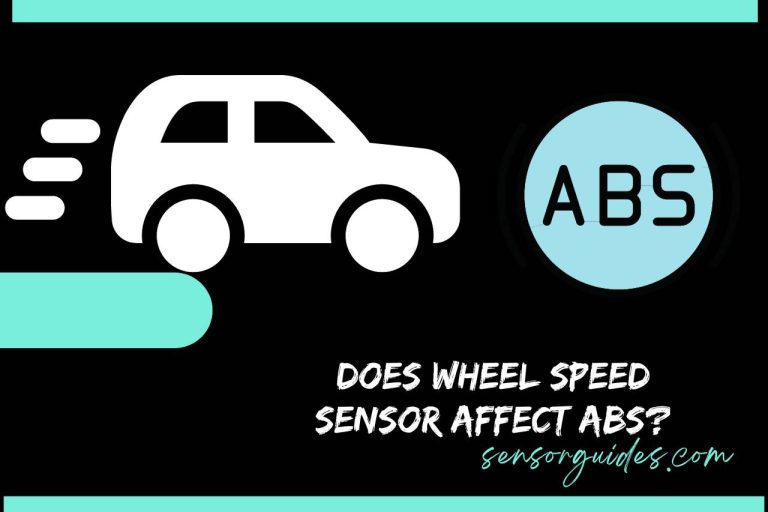Do You Have To Relearn A Crankshaft Position Sensor? Must Read
What happens when you don’t relearn the crankshaft position sensor? The ECU might not know the exact position of the crankshaft if you don’t retrain the crankshaft position sensor. Numerous issues, including the engine not starting, the engine stalling, and the engine running rough, may result from this. Furthermore, because of incorrect signals sent by the ECU, you might experience more issues with acceleration and additional engine damage.
In this article, you will learn everything about relearning the crankshaft position sensor with all the relevant information you need to know.
Table of Contents
What does the crankshaft position sensor do?
A crankshaft position sensor, also known as a crank sensor, is used to determine the position and speed of the crankshaft in an internal combustion engine.
It provides the engine control module (ECM) with information about the crankshaft position, which controls engine timing and ensures proper engine operation.
Where is it located?
The sensor is typically located near the crankshaft pulley or flywheel and generates a signal as the crankshaft rotates.
The signal is then sent to the ECM, which uses the information to determine the position of the crankshaft and the engine’s speed. This information is then used to control engine timing, ignition timing, and fuel injection.
What happens when the Crankshaft position sensor fails? The symptoms.
When a crankshaft position sensor fails, it can cause a variety of problems with the engine. Some of the symptoms of a failed crankshaft position sensor include:
Engine not starting: If the sensor is not sending a signal to the engine control module (ECM), the engine may not start.
Rough idling or stalling: Without the proper information about the crankshaft’s position, the engine may have difficulty maintaining the correct timing, which can cause rough idling or stalling.
Reduced engine power: A faulty crankshaft position sensor can prevent the engine from receiving the proper amount of fuel, which can cause a reduction in engine power and performance.
Check Engine Light: A malfunctioning crankshaft position sensor will often trigger the check engine light to come on
Engine misfire: Without proper information about the crankshaft position, the engine may fire at the wrong time, which can cause a misfire and reduced power.
Poor fuel economy: If the engine is not operating correctly, it may consume more fuel than necessary, leading to poor fuel economy.
It is important to note that these symptoms may also be caused by other problems, such as a malfunctioning fuel system or engine control module, so it is always best to have the vehicle properly diagnosed by a professional mechanic if you suspect that the crankshaft position sensor is faulty.
It’s important to replace the sensor as soon as possible to prevent damage to the engine, as well as to maintain the proper and safe operation of the vehicle.
Do you have to relearn a crankshaft position sensor?
A crankshaft position sensor, also known as a crank sensor, is used to determine the position and speed of the crankshaft in an internal combustion engine. In some vehicles, the sensor may need to be relearned, or recalibrated, after it has been replaced.
This is typically done by using a diagnostic tool to reset the sensor and then driving the vehicle in a specific way to allow the sensor to learn the new position of the crankshaft.
It is highly recommended to check the vehicle repair manual, as the process of relearning the sensor can vary depending on the make and model of the vehicle.
How to relearn a crankshaft position sensor?
Relearning a crankshaft position sensor after it has been replaced requires a few specific tools and equipment:
- A diagnostic scanner,
- An OBDII interface,
- A repair manual or instructions specific to the vehicle.
The cost of relearning the sensor can vary depending on the make and model of the vehicle and the cost of labor. In general, the cost to relearn a crankshaft position sensor can range from $50 to $150.
The procedure to relearn a crankshaft position sensor will vary depending on the make and model of the vehicle, so it’s important to consult the vehicle’s repair manual for specific instructions.
Here’s a general procedure which may differ depending on the vehicle:
- Connect the diagnostic scanner to the OBDII interface and to the vehicle.
- Turn the ignition key to the “on” position.
- Follow the prompts on the diagnostic scanner to access the crankshaft position sensor function.
- Use the scanner to reset the sensor
- Start the engine and allow it to idle for a few minutes.
- Drive the vehicle at a steady speed of around 40 to 50 mph for a few miles.
- Repeat step 5 and 6 multiple times to allow the sensor to relearn the position of the crankshaft
Once the sensor has been relearned, clear any codes stored in the engine control module (ECM) using the diagnostic scanner.
It is important to follow the instructions from the vehicle’s repair manual as the procedure may vary from vehicle to vehicle. As this process involves electronic and mechanical systems and can be dangerous if not performed correctly, It is highly recommended to have a professional mechanic to perform it.
Benefits of Relearning the Crankshaft Position Sensor
Relearning a crankshaft position sensor can have several benefits for the vehicle’s engine and overall performance. These benefits include:
Improved engine performance:
The crankshaft position sensor provides the engine control module (ECM) with information about the crankshaft position, which is used to control engine timing and ensure proper engine operation. By relearning the sensor, the ECM can more accurately determine the position of the crankshaft and adjust the engine timing accordingly. This can improve engine performance, fuel efficiency, and power output.
Reduced emissions:
Proper engine timing is essential for reducing emissions. If the engine timing is off, it can cause the engine to run lean or rich, which can increase emissions. Relearning the crankshaft position sensor can ensure that the engine timing is correct, which can help to reduce emissions.
Avoid engine damage:
A faulty crankshaft position sensor can cause the engine to run at the wrong time, leading to engine damage from misfires, hydro-lock, or other issues. Relearning the sensor can ensure that the engine is running correctly, which can help to prevent engine damage.
Decrease in check engine light:
If the crankshaft sensor is not properly calibrated, it could trigger the check engine light to come on. Relearning the sensor can resolve this problem and turn off the check engine light.
Improved diagnostic accuracy:
Relearning the sensor allows the Engine control module (ECM) to receive the accurate position of the crankshaft. This can help to improve the accuracy of diagnostic tests and make it easier to identify and fix other problems that may be affecting the engine.
Overall, relearning a crankshaft position sensor is a crucial step in maintaining the proper operation and performance of the vehicle’s engine. It is recommended to have a professional mechanic perform the relearning process to ensure it’s done properly and safely.
Can you drive with a faulty crankshaft sensor?
It is not advisable to drive with a faulty crankshaft position sensor. A malfunctioning crankshaft sensor can cause a variety of problems with the engine and its performance which can compromise the safety of the vehicle and its passengers.
When a crankshaft position sensor fails, it can cause the engine to not start, or to stall while driving. This can make the vehicle difficult or impossible to control, which can be dangerous on the road.
Additionally, a faulty crankshaft sensor can cause the engine to misfire or run poorly, which can result in a reduction of power and poor fuel efficiency. It can also cause the engine to consume more fuel than necessary, which can lead to increased emissions and damage to the catalytic converter.
If the crankshaft sensor is not working, the check engine light might come on and it might trigger other fault codes, It’s important to have the vehicle properly diagnosed by a professional mechanic to determine if the crankshaft position sensor is the cause of the problem, and if so, to replace it as soon as possible to prevent damage to the engine, and to maintain the proper and safe operation of the vehicle.
It’s best to avoid driving a car with a faulty crankshaft sensor, as the issues can be severe and can impact the safe operation of the vehicle and its passengers.
Some related FAQs.
Can I just replace a crankshaft position sensor?
Although the crankshaft position sensor is a fairly complex piece of machinery and you might be apprehensive about replacing it yourself, you shouldn’t be. You can replace your own crankshaft sensor with the right tools, some work, and clear instructions.
Does crankshaft sensor affect RPM?
The crankshaft position sensor’s functional goal is to ascertain the crank’s position and/or rotational speed (RPM). Engine Control Units use the data the sensor transmits to regulate variables like fuel injection timing and ignition timing.






